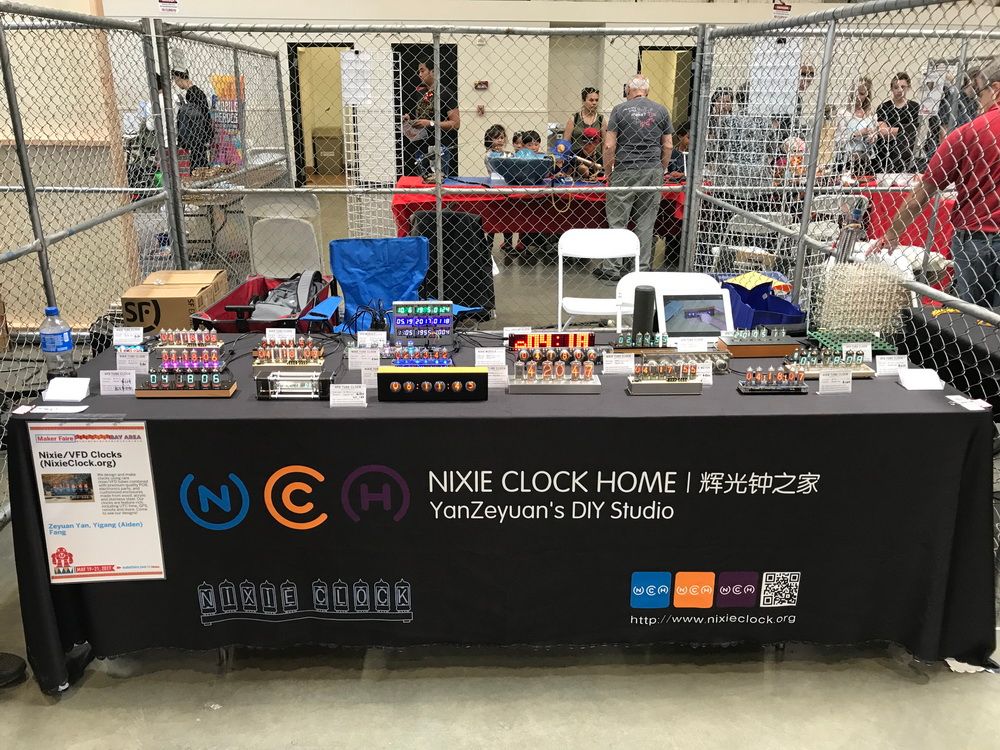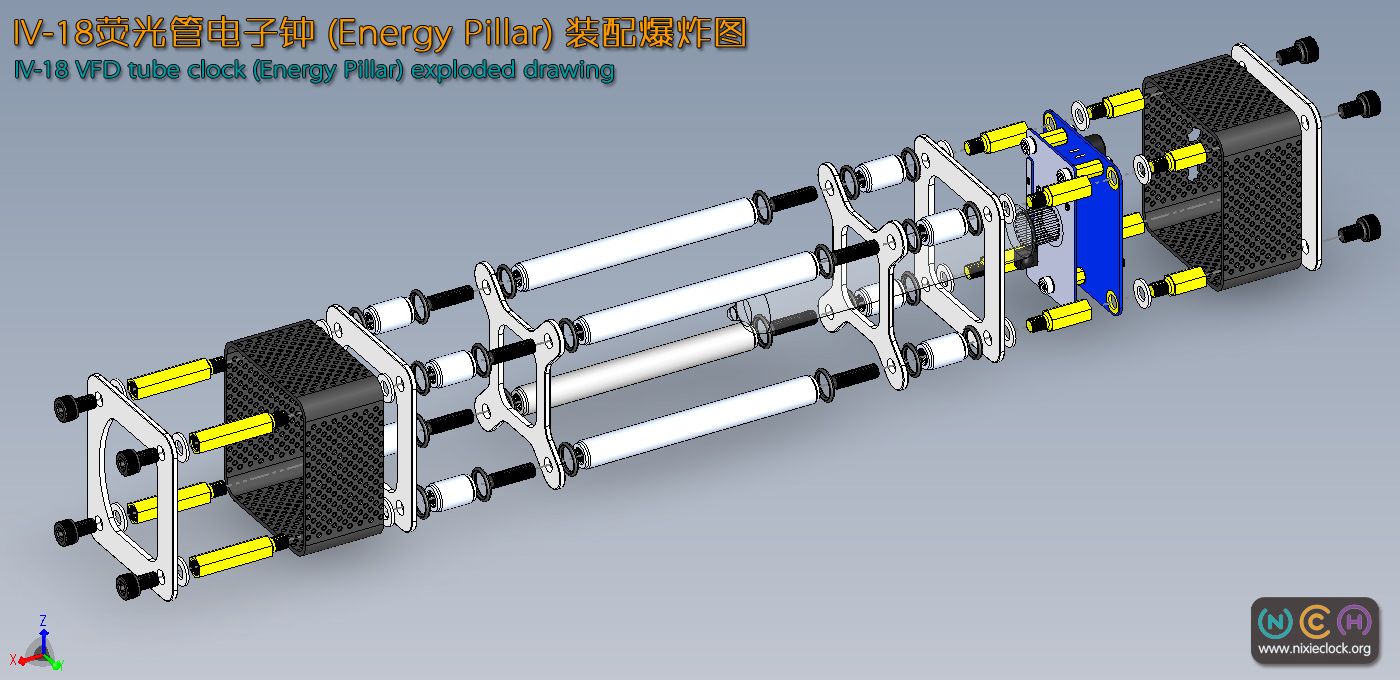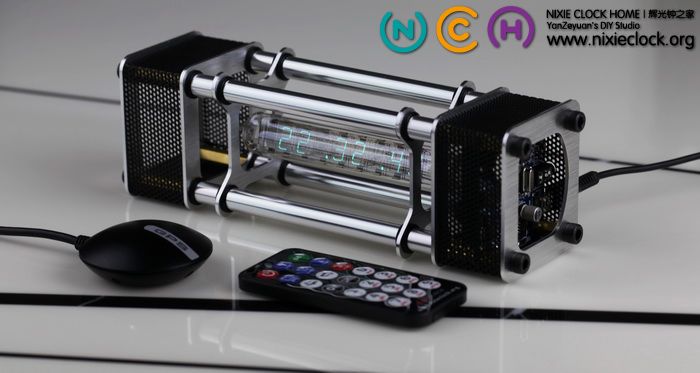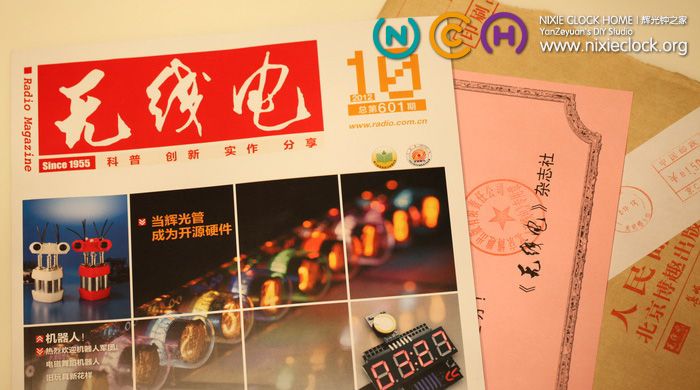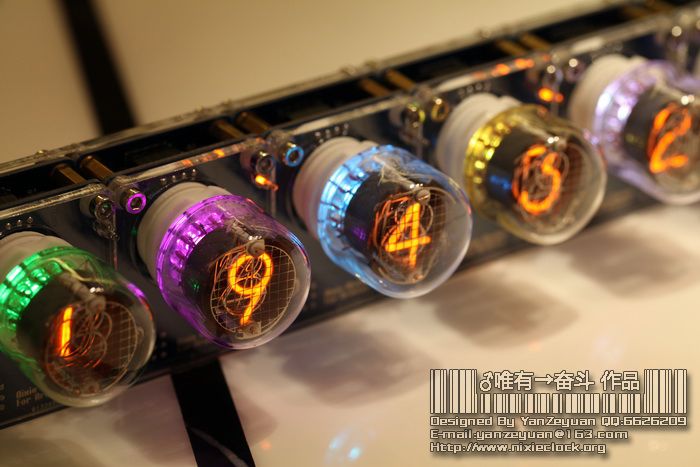杂谈.感触.体会...
2014 Happy New Year!!!
钟表,可以回到起点, 却已不是昨天; 日历,撕下一页简单, 把握一天很难。
2013只剩最后1天, 若是美好,叫做精彩; 若是糟糕,叫做经历。
随着年龄的增长, 我们不是失去了一些朋友, 而是懂得了谁才是真正的朋友!
缘分万千,顺其自然;以心换心,才能永远 !
祝福所有的朋友和家人:旧历圆满,新岁飘香!2014 新年快乐!

国内外NixieFans作品秀
“当上海遇见布拉格”捷克艺术展览 – 赴上海参观捷克Dalibor自制的辉光管
“When Shanghai meets Prague” exhibition – Visit nixie tubes made by Dalibor at Shanghai Museum of Glass.
2013年12月21日,上海,晴,3℃
作为一名痴迷的辉光管爱好者,当然不会放过任何机会亲自参观国外辉光大师的作品,在听说捷克艺术展览“当上海遇见布拉格”在上海玻璃博物馆开启以后,就开始期待这一天!
今天在好友的带领下,顶着寒风来到了上海玻璃博物馆,冷落了一楼那些别致的玻璃艺术品,直奔二楼捷克展馆。
刚进捷克艺术展馆,摆在入口中间重要位置的,就是我的好友/捷克玻璃工艺大师/资深辉光管爱好者 Dalibor的辉光钟作品,当然,这两颗仅有的辉光管就是Dalibor本人手工制作的。
在设计之初,Dalibor在问我,他想将这个作品起名叫“Shanghai Time”,让我帮忙给起一个中文名字,想来想去,还是觉得“上海时光”比较贴切。
更加荣幸的是,这个作品的高压升压部分,用得就是我的NCH6100HV辉光管高压升压模块。
展览时间从2013年12月11日 至 2014年3月11日,历时4个月,上海玻璃博物馆在上海市宝山区长江西路685号,希望上海的朋友可以亲自前去观赏。
去的朋友记得给Dalibor投个票哦!
下面,就和我一起来欣赏Dalibor的辉光管作品:
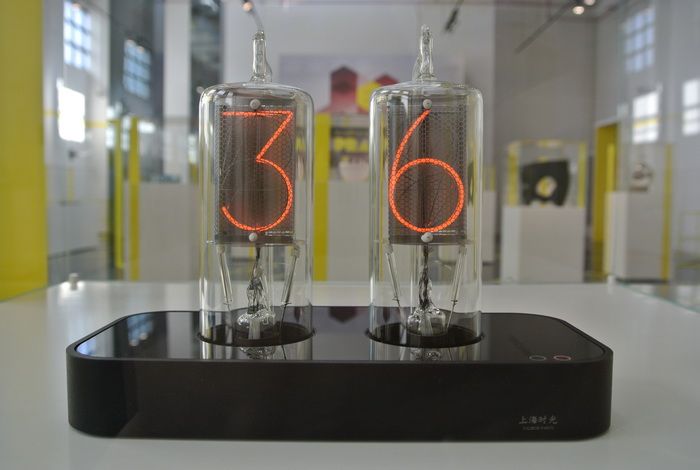
NixieShow辉光钟秀
红外线遥控器全新升级 | New IR Remote
相对于复杂的造型设计,我更追求简约的外形风格,所以,我的时钟作品几乎都采用红外线遥控器来进行控制;例如开关机、查看日期和闹钟以及温度、设置日期时间等等;
之前一直采用时下流行的超薄遥控器,她身材娇小,很薄,21个按键也能够满足需要,但通过这些年的观察发现,超薄薄膜型红外遥控器的寿命比较短,使用时间久了需要用力按压按键才能正常使用。
为此,经过对市场上众多同类产品的对比和筛选,Nixie Clock Home的新款红外线遥控器全新升级!
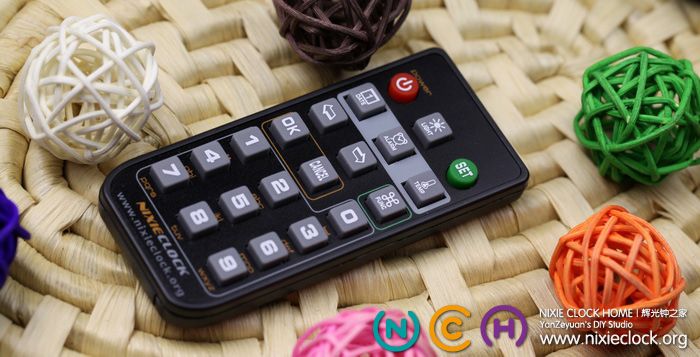
GP1211AI VFD点阵动画时钟
基于Futaba GP1211AI的VFD点阵动画时钟
声明:本作品的电路设计和软件设计为kazuyuki。
自从白菜VFD 128×64在市场上出现以来,相信有不少朋友都过了把VFD的瘾,尤其是在kazuyuki的带领下一路过来,版本已经升级到了V7。
我也忍不住口水,弄了一套kazuyuki的V7套件,过了把瘾。在此,感谢kazuyuki,感谢所有为玩转128×64付出过的朋友们。
但是外壳的设计和制作一直以来都是DIY的瓶颈,对于V7来讲,一款廉价又实用的外壳显得尤为重要;
今天,终于结束了V7裸奔的日子,经过几番设计,一款成本在15元左右的V7外衣诞生:

IV-18 VFD Tube Clock
IV-18荧光管电子钟装配指南【IV-18 Energy Pillar Assembly Instructions】
上个月推出了IV-18(ИВ-18)荧光电子管时钟DIY套件,由于外壳装配过程稍稍复杂,所以这两天用Solidworks绘制了一整套3D装配指南图片,供大家参考。
IV-18 (ИВ-18) the VFD tubes Clock DIY kit published last month, the housing assembly process is a little more complicated, so these two days with Solidworks drawn complete set of 3D assembly guide pictures for your reference.
整个外壳的装配过程请按照图示说明进行,如有疑问请大家给我留言!
The housing assembly process is carried out in accordance with the illustration, any questions please leave a message or email me!
IV-22 VFD Module
IV-22 VFD Module for Arduino [hardware design]
VFD tube, vacuum fluorescent display, which was invented in Japan in 1967, typifies the display component of the vacuum electronic era.
Just as the Nixie Tube, VFD tube is also on the verge of extinction. It has been fade out from modern applications since the 1990’s. Young generations may have never seen its limpid cyan fluorescence, given life by the intelligence of the last century.
With the same concept of developing the Nixie Tube module for Arduino, in order to make the VFD tube reborn, combined antiquated electronics with modern technology, the VFD tube module is developed as independent blocks. Without headaches about high-voltage generation, logical driver, soldering, geekers can focus their time and energy on achieving the design idea of the final works. Meanwhile, for designers with no electronic background, Arduino is all they need, of which 4 I/O pins can supply full control on a dozens of VFD tube modules with individual RGB led background lights. Other MCU systems or developer kits would do the same.
Thanks aGuegu for testing my VFD tube moudle first-handed and developmet of its Arduino library.
The technology of VFD is still widely used nowadays, however, no more in tubes. VFD screen is Hi-fi equiment, Automobile instrument panels. This device consists of a hot cathode (filaments), anodes (phosphor) and grids encased in a glass envelope under a high vacuum condition. The cathode is made up of fine tungsten wires, coated by alkaline earth metal oxides, which emit electrons when heated by an electric current. These electrons are controlled and diffused by the grids, which are made up of thin metal. If electrons impinge on the phosphor-coated plates, they fluoresce, emitting light. Constract to the Nixie tube, it requires lower supply voltage, which means is safer and longer life expectancy.
This module application use model IV-22 (ИВ-22) VFD tube, dimensioned as a rectangle of 32mm * 22mm. It display on top with 12 pins. These batch of tube were mass manufactured in former Soviet Union during the Cold War, whereas, they are stored in warehouse corners and being forgotten. But its material guarantees its unlimited shelf life.
The specifications of IV-22 VFD tube:
1. High vacuum inside, unlike the inertia in nixie tube.
2. Lower vlotage requirement and energy consumption. The filament voltage is between 1.0 and 1.3 volt, working both on DC and AC. The voltage of anodes (phosphor) against grids is 22-30v. The current in filament is 100mA, while 4-10mA in grids.
3. Seven-segment digital display, can present decimal figures and basic letters.
4. Cyan colored, bright light with high contrast, visible even in daylight, and not Glare.
Check some photos, and more description comes afterwards.
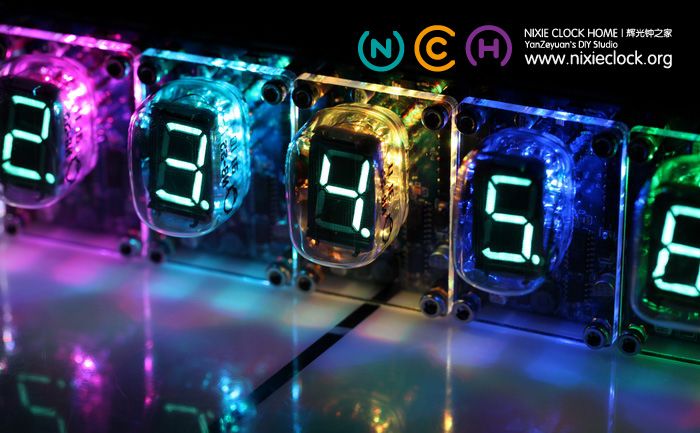
QS30-1 Nixie Module
NixieModule登上《无线电》杂志封面…
同许多80后一样,告别纸质媒介已近十年…
回想起大学里必订的4本杂志《无线电》、《电子世界》、《电脑爱好者》、《中学科技》,恐怕现在已经被网络冲击的销量大不如从前;
但作为曾经的《无线电》忠实读者,而且有幸将自己的作品再次刊登在上面,并荣登封面,还是颇有喜悦之感!
这次刊登的作品是QS30-1 Nixie Module for Arduino,与官微宏(Agu’s Mill)一起从硬件设计到Arduino应用均进行了详细的介绍;
其实大部分内容均出自本博客相关的博文,有兴趣的朋友欢迎前去浏览。
在此感谢《无线电》杂志社,感谢各位朋友的关注与支持!
